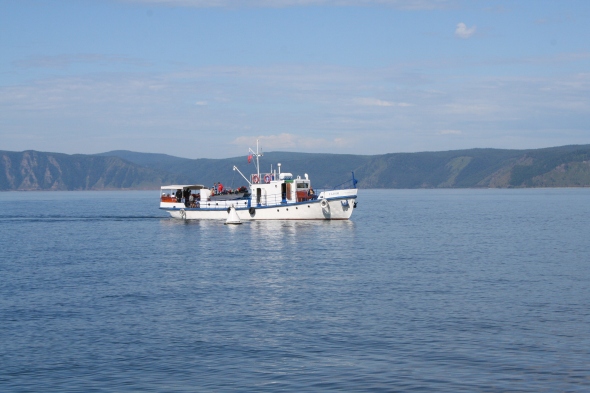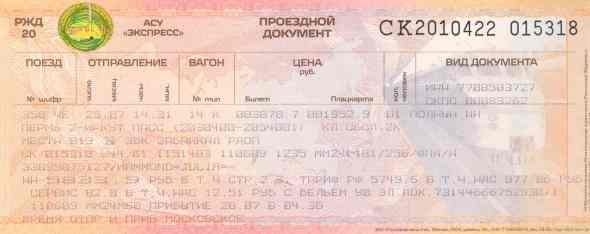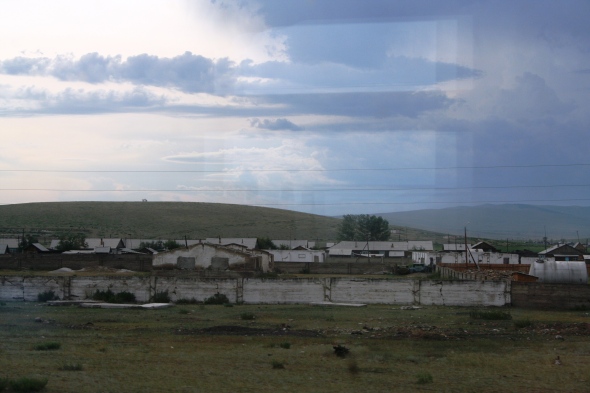A beginner’s guide to the Trans-Siberian
I love a good train trip and the ultimate in rail journeys has surely got to be the Trans-Siberian in some form or another. If you’re thinking of crossing Russia by train, I’d suggest doing some background reading beforehand to get your head around what seems like a complex trip but in reality is more straightforward than it looks.

What is the Trans-Siberian?
Some people wrongly believe that the Trans-Siberian is one single luxury train. It’s not. It’s one of several long distance routes that stretch across Russia. Generalising a little, there are three main routes: the Trans-Siberian, the Trans-Manchurian and the Trans-Mongolian. Following each of these routes, it is possible to travel on a single train, but most people stop off along the way to explore some of Russia’s great sights – and see something of Mongolia and China as well, perhaps.

Trans-Siberian route (Courtesy of Ertmann and Profil CC BY-SA 2.5 via Wikimedia)
How long will I need?
To follow the classic route from Moscow in the west to Vladivostok in the east without stops will take 6 days. If you plan to do this, you’ll need to book the Rossiya train (number 1 or 2 depending on the direction you take). Extending your journey , you could begin (or end) in St Petersburg rather than Moscow, which are connected by an overnight train taking about 8-9 hours, or the high speed Sapsan train which covers the distance in about 4 hours. Personally, I’d allow at least a couple of days to scratch the surface of Moscow or St Petersburg, though it’s easy to spend more time in either. To cover the whole route with a few meaningful stops, it’s best to allow a couple of weeks, more if you can. And of course, you can do the whole trip overland with connecting trains via Paris and a route that takes you through Berlin, Warsaw and Minsk.

What was my itinerary?
Mine is, of course, by no means the definitive tour. On these three routes, it’s easy to tailor your journey according to your own personal preferences. I flew from London City airport to Moscow as at the time I booked, this worked out cheapest. When I planned my trip, I’d already been to Beijing, so I opted for the Trans-Mongolian from Moscow to Ulan Bator in Mongolia, leaving the Trans-Siberian on the map above at Ulan-Ude and heading south to the border. Read more about Russia here:

I stopped at Vladimir (for Suzdal and the Golden Ring) and then Perm (to visit one of Stalin’s notorious gulags). I skipped the popular stop at Yekaterinburg for reasons of time, though I’d like to visit next time, making the journey from Perm to Irkutsk in one go (a little under three days and over 3000 miles) as I wanted to experience a multi-night trip. I think that was enough: though you can book itineraries which involve staying on board the train for longer, I was definitely ready to sleep in a proper bed after two nights on the train and it was an amazing feeling to luxuriate in a bath and soak away all that train grime and staleness. There’s only so much wet wipes and dry shampoo can achieve!

I had a couple of days at Irkutsk so I could visit Listvyanka at Lake Baikal. On a second trip, I’d build in more time here as it was beautiful – and frozen in winter, it must be a special place indeed. Reboarding a train, I crossed over the border to Mongolia. Having seen a little of the Mongolian capital I set off into the surrounding countryside for an unforgettable stay in a ger with the steppe nomads. Culture shock is an understatement! Read about it here:
I then retraced my steps to Ulan-Ude from where I caught a flight back to Moscow with budget airline S7 – a six and a half hour domestic flight which gives you some idea of the country’s vast size. This worked out considerably cheaper than finding a single leg fare to Moscow and home from UB. In all, the train tickets cost me about £500, with flights adding about £350 to the total. In all a couple of weeks’ holiday cost me around £1500 including basic hotels, meals and sightseeing.
Is it easy to do as an independent traveller?
Yes and no. I’m a big fan of independent travel, not only for the cost savings, but also for the flexibility it gives me to tailor the itinerary to suit my exact requirements. But I’m also not a Russian speaker and I felt I needed support with the booking process to ensure I ended up with the right tickets for the right trains. As you can see from the ticket below, it’s not at all easy to understand not only a different language but a different alphabet as well.

Due to the complexities of the railway ticketing system plus visa considerations, I decided to use a single specialist travel agent for those two aspects of my trip. As is my usual style, I booked my own flights, accommodation and most of my sightseeing myself; the exception was a private tour to Perm-36 Gulag which I also outsourced. I used a UK-based company called Trans-Siberian Experience (https://www.trans-siberian.co.uk) who were very efficient and helpful. The day trip was a 260km round trip from Perm, customised to my personal requirements and cost £170, the most extravagant part of my trip but more than worth the outlay.

The company I used at the time was Real Russia.
http://realrussia.co.uk/Trains/Trans-Siberian
Their website has a dedicated Trans-Siberian section which enables you to check train times, suss out possible routes, check prices and order visas. It’s clear and in my experience the support offered by the team was excellent. All my tickets were sent in good time with English translations, the visa process was uncomplicated and every aspect of the trip that they’d arranged went according to plan – which was more than could be said for some of my own bits:
https://juliamhammond.wordpress.com/2016/11/06/lost/

Since switching careers, I’ve done a lot of work for Just Go Russia, another London-based agency specialising in Russia, and they are always extremely efficient. If you’re looking for a tour, they do offer a wide range of options. You can find them here:
http://www.justgorussia.co.uk/en/transsiberian.html
Even if you don’t end up booking a tour, it’s a good way of getting an overview of the route and whittling down the options about where to stop off. Another source of information is The Man in Seat 61, my starting point for every train trip I’m planning outside the UK. There’s a good overview here:
http://www.seat61.com/Trans-Siberian.htm
What’s it like on the train?
Each of the trains I took was a little different. I “warmed up” on the short leg from Moscow to Vladimir and this was a regular seated train. That took away some of the nerves about checking I was on the right train, right seat and so on, without the worry of a missed long distance connection. From Vladimir heading east, some of the long distance trains leave in the middle of the night, so I opted for one departing early evening which arrived after lunch the following day. The overnight trains varied considerably in terms of speed and quality, something that is reflected in the price.
Another thing to factor in if travelling in Russia’s hot summer is that the air-conditioning is turned off when you stop at the border and the windows of such carriages don’t open; more basic trains have windows that can be pulled down to let in a breeze. (In winter, in case you’re wondering, the trains are heated, so prepare to swelter on the train and freeze on the platform.)
Some compartments featured luxury velour seating, others were more basic, such as the one I travelled on from Perm to Irkutsk. In my opinion, that didn’t really matter as I followed the lead of my compartment companions (all Russians) and stretched out on a made bed all the way rather than converting it back to a seat. When I did the Irkutsk-UB leg, the train was more luxurious, those sharing the compartment were all tourists like me and we all sat up during the daytime. To be honest, I liked the local approach best.

In all cases, I opted for second-class tickets which provided comfortable accommodation though no en-suite facilities. The logic to this was that as a solo female traveller I didn’t want to be alone in a compartment with a single man and the first-class compartments came as two-berth not four-berth kupe. I shared with three men from Perm to Irkutsk but as everyone sleeps in their clothes nothing untoward happened and actually I was well looked after by one of them in particular, a Russian army officer heading on to Chita.
Border crossings can be daunting, but knowing my visas and documentation were in order was helpful. Formalities vary and the immigration officials will make it clear whether you are to remain on board or not. It is normal for them to take your passports away; that can feel stressful but having a photocopy of your papers is a comfort. Note that the Chinese trains run on a different gauge so the carriages have to be lifted onto new bogeys.
What should I pack?
As you are likely to sleep in your clothes then picking something comfortable like jogging bottoms and a loose T-shirt is a good idea, though clearly you won’t win any fashion awards. Who cares? I found it helpful to pack changes of clothes (socks, underwear and T-shirts) in a day pack so I could store my suitcase under the bed and forget about it.
In terms of footwear, most of the locals seemed to favour blue flip-flops with white socks. Slip on shoes of some form are convenient to help keep your bedding free of dust picked up from the floor. The provodnitsa, or carriage attendant, will come round with the vacuum cleaner each day and will chastise anyone who’s made a mess, so keep the compartment clean.
It’s a good idea to book a lower bunk as you are then sleeping on top of your bags, affording grreater security than the open stow holes up top. It’s possible to lock the door from the inside, but not from the outside, so when you visit the bathroom it’s reassuring to know that your belongings are out of sight. Having a small handbag to carry passport, money and other valuables – like train tickets! – was also helpful. When I’m travelling by overnight train I always take a lockable, hard shell wheelie; it’s narrow enough to wheel down train corridors and light enough to lift from the platform, but also more robust than a slashable canvas bag. A determined thief will steal or break into anything, so it’s about making yourself a more difficult target than the next passenger.
When I travelled, the bathroom facilities were pretty basic so I would definitely recommend taking lots of wet wipes and also a can of dry shampoo. It’s amazing how clean you can get yourself in a small cubicle with just a small sink. These days, most Russian overnight trains have a special services car with a pay-to-use shower which would have been great. You do need your own towel, but I use a special travel towel which folds up small and dries fast. I won mine in a competition but you can get something similar here:
http://www.nomadtravel.co.uk/c/261/Travel-Towels-and-Wash-Bags
In terms of sustenance, the provodnitsa also keeps a samovar boiling from which you can get hot water to make tea, noodles or soup, so I packed some of these too. Some were more accommodating than others; if you get a grumpy one, she’ll lock her door or disappear for hours at a time. I was lucky to have a smiling provodnitsa on my longest leg, which made a difference. The Russians travelled with plenty of food which they generously shared, most memorably omul, a kipper-like smoked fish common in Siberia.

There’s a restaurant car as well and at station stops, despite the queues there was often enough time to nip off to buy food from the platform vendors, so carry enough small change for these kind of purchases. Finally, it’s a long way. Although batteries can be charged (though sometimes in the corridor on older trains) I’d pack an old fashioned paperback to read or carry a pack of cards to entertain yourself. Take family photos – in my experience it’s true that Russians love to share theirs. It’s also true that a bottle of vodka can break the ice though some compartments sounded more raucous late at night than others – the luck of the draw! I also had a copy of the Trans-Siberian Handbook (as opposed to the Lonely Planet which I would usually take) because the level of detail about what you’ll see out of the train window was much better.

Anything else I should know?
One of the things I was most worried about before I set off was missing a train or missing a stop. In the event, neither of these were an issue. At the station, huge signboards helped identify where the train might pull in and showing the ticket and smiling a lot got me escorted to many a carriage door. Pretty much without exception, I found the Russian railway staff very helpful. The trains used to run on Moscow time which could be a little confusing at first, but there are timetables up in the corridors and even on the longer legs I usually knew roughly where I was. Since summer 2018, they’ve switched to local time and are showing both times to help ease the changeover.
A phrase book helped me decipher the Cyrillic alphabet; my technique was to focus on just the first two or three letters rather than trying to remember the whole name. Thus Suzdal became CY3 etc. The train provodnitsas were very good at giving their passengers plenty of warning when their stop was imminent and so I managed to get across Russia without incident.
I never felt unsafe during my trip but I would say that you need to be a bit savvy when it comes to your valuables. Keep your passport and money with you, don’t flash around expensive cameras or laptops but equally, don’t get too paranoid.
Would I do it again?

Yes! The scenery at times was monotonous but that was missing the point. The adventure was in the interactions with people on the train; the sightseeing came after I alighted at the station. Next time I think I’ll begin in St Petersburg, detour to Kazan and make that visit to Yekaterinburg before heading east to Vladivostok. Now where did I put that Trans-Siberian handbook?


Fantastic Julia, you have undertaken one of my travel ambitions. A great read to see in 2017. Thanks for getting me dreaming!
LikeLiked by 1 person
January 1, 2017 at 12:07 pm
Happy to, Wilbur. I might be harassing you for some tips on Georgia and Armenia, tentatively planning a trip there later in the year – or Rwanda, can’t decide!
LikeLike
January 1, 2017 at 12:09 pm
Nice writeup, Julia – I’d agree with everything you said, there’s some good advice in there. I’ll have to start posting some of my reflections on it.
LikeLike
January 1, 2017 at 12:24 pm
Thanks Rob and look forward to your insights!
LikeLike
January 1, 2017 at 12:30 pm
Another great write-up Julia! The Trans-Siberian has been on my bucket list for at least a decade, but I’ve yet to find the right combination of time and money to do it! Anyway, your write-up has encouraged me to look at my copy of the Trans-Siberian handbook once again. 😉
LikeLiked by 1 person
January 2, 2017 at 5:13 am
Thanks Rachelle! Happy researching!
LikeLike
January 2, 2017 at 11:31 am
Great article! I did this trip about two years ago and I have been feeling nostalgic, so this blog might possibly be my new addiction
LikeLike
March 29, 2017 at 5:43 am
I’m glad to hear it. If there are any areas you’d like me to blog about, don’t hesitate to send a request.
LikeLiked by 1 person
March 31, 2017 at 9:32 am
A great guide for travelers! I have lived in Chita for many years and know the route “Moscow-Chita” very well. This is a real journey in space and time 🙂
LikeLiked by 1 person
January 12, 2018 at 10:44 am
Thanks George, just about the best train trip there is.
LikeLiked by 1 person
January 12, 2018 at 11:03 am
Pingback: How I choose my next destination | Julia's Travels